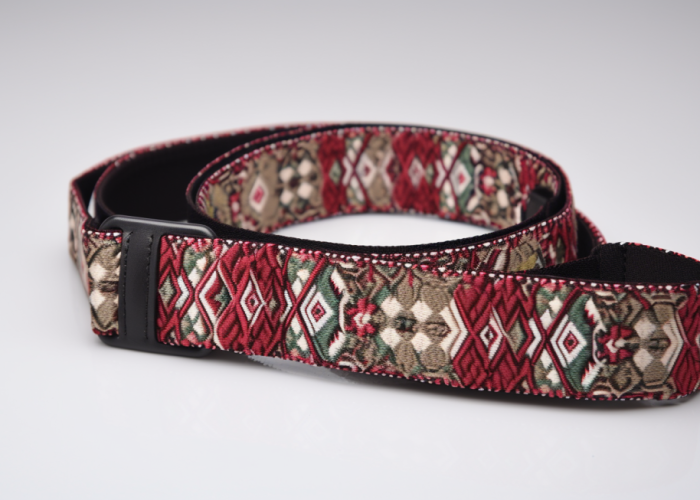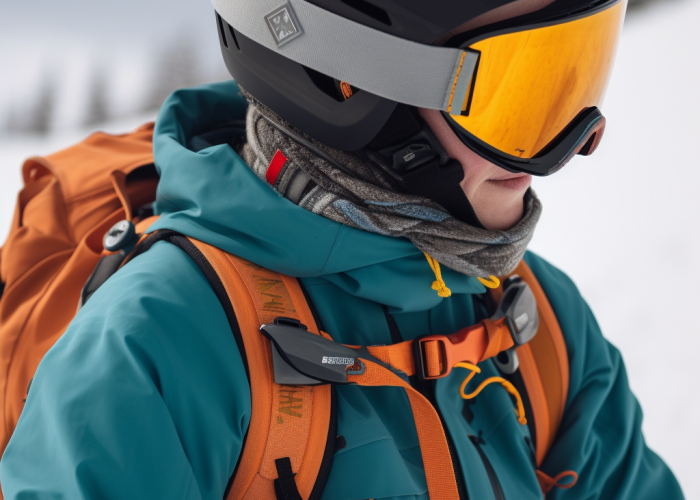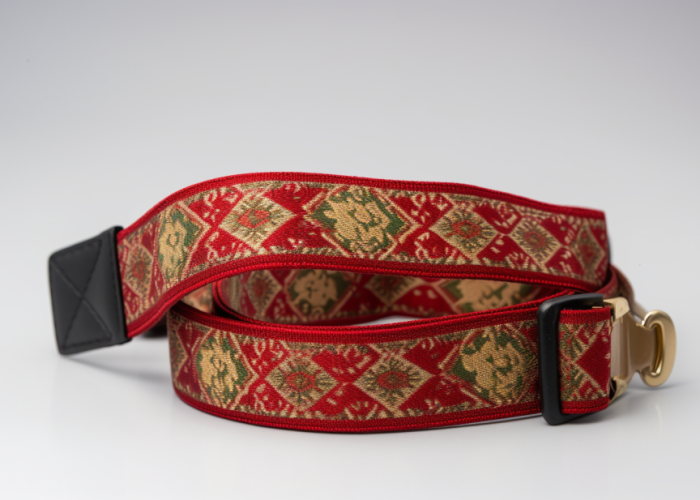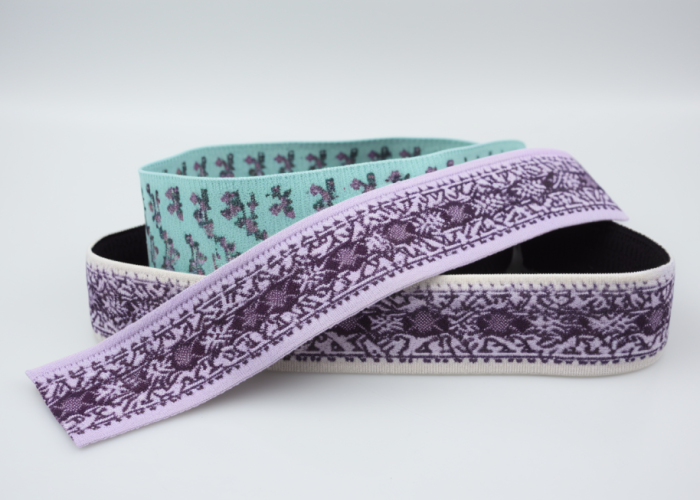As a custom webbing manufacturer specializing in performance straps, we regularly help goggle manufacturers optimize their designs for specific applications. This post addresses the most common questions we receive about material selection, construction methods, and performance optimization for goggle straps. We’ll share our manufacturing expertise to help you make better design decisions that enhance product performance and reduce development risks.
Goggle strap customization starts with choosing the right material, weave structure, and finishing method to meet comfort, durability, and performance needs across different applications.
Learn how to design high-performance goggle straps with key material data, design tips, and custom manufacturing insights in this expert guide.


Webbing manufacturing expert with 15+ years of experience helping product developers build high-performance straps for industrial, medical, and outdoor use.
Different goggle applications demand vastly different strap performance characteristics based on environmental exposure and safety requirements. Swimming goggles need chlorine-resistant elastic materials, ski goggles require UV-stabilized webbing, and safety goggles must meet flame-resistance standards for reliable performance across specific use conditions.
Key Application Requirements:
In our 15+ years manufacturing goggle straps for major swim equipment and industrial safety companies, we’ve produced over 2 million straps and identified critical performance differences. Swimming goggle straps face chlorine exposure because chlorine molecules break down polymer chains in elastic fibers, causing permanent stretch loss—requiring chlorine-resistant elastomers. Ski goggle straps encounter UV radiation that causes photodegradation of polymer bonds, with UV exposure increasing 10-15% per 1,000 feet of altitude, making UV-stabilized additives essential.
Safety applications are most stringent because straps serve as life-critical retention systems. Flame-resistant treatments form protective char layers that insulate underlying fibers, but effectiveness varies with fiber type and treatment chemistry. Our ASTM D6413 testing represents controlled laboratory conditions—actual emergency scenarios may involve higher temperatures or longer exposure.
Field analysis from customer returns reveals predictable failure patterns: swimming goggle elastic degradation in poorly maintained pools, ski goggle UV brittleness correlating with altitude and exposure hours, and safety goggle failures from inadequate flame resistance under emergency loading.
Design Takeaway: Environmental stresses create specific material degradation mechanisms. For swimming, specify chlorine-resistant elastomers. For outdoor sports, require UV-stabilized materials with photodegradation resistance. For safety applications, ensure flame-resistant treatments exceed minimum standards with adequate safety margins for emergency conditions.

Polyester elastic webbing provides the optimal balance of performance characteristics for most goggle applications, offering superior chlorine resistance, consistent stretch recovery, and long-term durability compared to nylon or cotton alternatives. Material selection should prioritize molecular structure compatibility with environmental stresses over cost considerations.
Primary Material Options:
Polyester’s aromatic polymer chains resist hydrolysis and chemical attack, maintaining 85-90% of original elasticity after 500 hours of chlorine exposure. In contrast, nylon’s amide linkages are susceptible to chlorine degradation, losing up to 40% stretch capacity because chlorine attacks hydrogen bonds in the polymer structure. Our material testing for competitive swimming equipment manufacturers validates these differences through accelerated aging tests per ASTM D1149 protocols.
Temperature performance further differentiates these materials. Polyester elastic maintains consistent flexibility from -10°F to 140°F, while nylon exhibits significant stiffening below 32°F that can cause user discomfort. However, nylon offers superior abrasion resistance and higher tensile strength, making it suitable for heavy-duty safety applications where durability outweighs stretch properties. We’ve developed hybrid polyester-nylon constructions for safety goggle manufacturers requiring both characteristics, though this increases manufacturing complexity and costs by 15-25%. These laboratory results represent controlled conditions—actual performance may vary based on pool chemistry and maintenance practices.
Design Takeaway: Polyester elastic is the default choice for swimming and recreational applications due to superior chemical resistance. Nylon works best for safety applications requiring maximum strength. Hybrid constructions optimize both properties but increase complexity—specify only when performance testing validates the benefits for your specific application.

Critical goggle strap specifications include width (12-25mm), thickness (1.5-3.0mm), stretch ratio (200-400%), and tensile strength (minimum 150 lbf) to ensure proper fit, comfort, and safety performance. These parameters must align with intended application loads and user comfort requirements.
Essential Specification Parameters:
Industry standards like ANSI Z87.1 require safety goggle straps to withstand a minimum 16 lbf sustained load without permanent deformation, but our customer projects typically exceed these by safety factors of 3:1 to 10:1 depending on application criticality. Width selection directly impacts user experience—12mm straps concentrate 40% more pressure per unit area than 20mm straps, potentially causing discomfort during extended wear.
From our engineering experience with major goggle manufacturers, including VR headset companies, we’ve learned that initial aesthetic preferences often conflict with comfort requirements. One VR manufacturer initially specified narrow straps for sleek appearance but switched to 20mm width after user testing revealed pressure point issues during 2+ hour gaming sessions. Similarly, thickness selection balances durability against comfort—thicker straps resist cutting and abrasion but may create facial pressure points.
For specialized applications, regulatory compliance adds specification layers. Medical applications require FDA biocompatibility, while industrial safety demands OSHA compliance and specific flame resistance ratings. Our testing represents controlled laboratory conditions using standardized protocols—actual performance varies based on manufacturing quality and material sourcing.
Design Takeaway: Start with 20mm width and 2.0mm thickness for general applications, adjusting based on user testing feedback. Specify 300+ lbf tensile strength for safety applications with appropriate safety factors. Validate critical specifications through sample testing rather than relying solely on supplier data—performance varies significantly between manufacturing sources.
Goggle strap construction method selection depends on balancing stretch properties, customization requirements, and durability needs, with plain weave offering maximum elasticity, twill weave providing enhanced strength, and jacquard construction enabling integrated branding. Printing method choice should align with environmental exposure and aesthetic durability requirements.
Construction and Printing Options:
Plain weave construction interlaces yarns in simple over-under patterns, maximizing fiber mobility and achieving 300-400% elongation in elastic webbing. Twill weave uses diagonal interlacing that creates stronger fabric but reduces stretch to 200-300% due to increased yarn stability. From our manufacturing experience with major swim goggle brands, jacquard weaving integrates logos directly into fabric structure using computer-controlled looms, eliminating secondary printing but requiring 5,000+ meter minimums to justify specialized tooling costs.
Printing method selection significantly affects durability per ASTM D3776 colorfastness standards. Dye sublimation bonds colorants with polyester fibers at the molecular level, achieving >95% color retention after 1,000 hours of chlorine exposure compared to 60-70% for surface inks. Screen printing offers cost advantages for simple designs but creates potential failure points where ink layers may crack under repeated stretching. These performance results represent controlled testing conditions—actual durability varies with pool chemistry and maintenance practices.
Heat transfer printing provides design flexibility for prototyping and short runs, though with reduced durability compared to sublimation methods.
Design Takeaway: Plain weave with dye sublimation provides optimal performance for swimming applications requiring maximum stretch and chemical resistance. Twill weave with screen printing works for safety applications prioritizing durability. Jacquard construction eliminates printing entirely but requires high volumes—specify only when integrated branding justifies manufacturing complexity and minimum orders.

Surface treatments can significantly enhance goggle strap performance through anti-slip coatings, moisture management, and comfort improvements, with silicone grip applications reducing slippage by 40-60%, reflective treatments improving visibility, and antimicrobial coatings preventing odor development during extended use.
Performance Enhancement Options:
Anti-slip treatments address the most common performance complaint—strap slippage during active use. Silicone-based grip applications create microscopic surface textures maintaining friction even when wet. Our testing with competitive swimmers shows 40-60% reduction in slippage incidents compared to untreated alternatives. The treatment involves applying liquid silicone through screen printing followed by heat curing to cross-link the polymer structure.
From our experience with professional swim teams, continuous grip strips provide optimal retention while dotted patterns maintain adjustability. However, silicone treatments collect chlorine residue and require frequent cleaning to maintain effectiveness—a trade-off between performance and maintenance requirements.
Reflective treatments serve dual purposes—safety visibility and aesthetic enhancement. Retroreflective yarns meet ANSI visibility requirements for industrial applications while adding less than 0.5 grams to total strap weight. Antimicrobial treatments using silver ion technology prevent bacterial growth, showing >99% bacterial reduction in validation testing per ISO 20743 standards, though effectiveness diminishes over 6-12 months requiring reapplication cycles.
Design Takeaway: Anti-slip silicone treatments provide measurable performance improvement but require maintenance considerations. Reflective treatments add safety value with minimal complexity for industrial applications. Antimicrobial treatments are essential for medical or extended-wear applications—specify replacement cycles based on actual use intensity rather than marketing claims.
Goggle strap development costs range from $0.15-0.45 per unit for standard constructions to $0.75-1.25 for complex custom designs, with project timelines spanning 4-12 weeks depending on material sourcing, tooling requirements, and testing validation needs. Understanding cost drivers enables better project planning and budget allocation.
Cost and Timeline Factors:
Material selection represents the largest cost variable. Standard polyester elastic costs $0.15-0.25 per unit, while specialized materials like flame-resistant nylon increase costs to $0.35-0.75 due to certification requirements per ASTM standards. From our experience with safety manufacturers, regulatory testing adds $2,000-5,000 to development costs but spreads across production volumes.
Customization complexity affects both cost and timeline. Screen printing adds $0.05-0.10 per unit with 1-2 week processing, while dye sublimation increases costs by $0.08-0.15 but provides superior durability. Jacquard weaving requires $1,500-3,500 loom setup, justified only for 5,000+ unit volumes. These costs represent current market conditions and fluctuate with raw material availability.
Timeline dependencies include material procurement (2-4 weeks), sampling (1-2 weeks), approval cycles (1-3 weeks), and production setup (1-2 weeks). Volume economics strongly influence unit costs—orders below 1,000 units carry 40-60% premiums, while 10,000+ unit volumes achieve 15-25% cost reductions.
Design Takeaway: Budget $0.25-0.50 per unit for standard custom straps with 6-8 week timelines. Complex constructions need 10-12 weeks and higher minimums to justify tooling costs. Plan regulatory testing time in safety applications—these cannot be compressed and require timeline buffers.
Custom manufacturing addresses common goggle strap problems through engineering analysis of root causes and tailored solutions, including pressure point elimination through width optimization, slippage reduction via grip treatments, and durability enhancement through material selection based on specific failure modes and use patterns.
Common Problems and Solutions:
Slippage represents the most frequent complaint across all applications. Our engineering analysis reveals standard straps often use incorrect stretch ratios—swimming goggles need 250-300% stretch for secure fit, while safety goggles require 150-200% to maintain position during sudden movements. We solved slippage for a major swim manufacturer by developing silicone grip patterns maintaining 85% friction coefficient when wet compared to 45% for untreated webbing.
Pressure point problems result from improper width selection. Working with a VR company, we identified their 15mm strap created concentrated pressure during extended use. Transitioning to 25mm width with beveled edges reduced pressure complaints by 70% while maintaining aesthetics through careful edge treatment and color matching per ergonomic design principles.
Durability failures concentrate at stress points—adjustment mechanisms and attachment points. Our failure analysis for safety manufacturers revealed 80% of warranty returns involved strap breakage at buckle attachments. We solved this through reinforced stitching patterns and stress distribution modifications extending service life by 200-300% under ASTM D6193 testing protocols.
Our methodology combines failure analysis, user testing, and iterative optimization. Success rates vary by complexity—simple material substitutions achieve 90%+ problem resolution, while ergonomic issues may require multiple iterations. Testing represents controlled conditions—actual performance depends on use patterns and maintenance practices.
Design Takeaway: Document specific failure modes and use patterns before proposing solutions—generic fixes miss root causes. Combine material optimization with construction modifications for comprehensive resolution. Plan iterative testing cycles rather than expecting single-attempt solutions for complex challenges.
Goggle strap customization requires careful material selection, construction method optimization, and application-specific performance validation for reliable results. Polyester elastic with dye sublimation provides the best balance of durability and performance for most applications, while safety goggles demand specialized materials meeting regulatory standards. As a custom webbing manufacturer, we offer tailor-made solutions and engineering consultation—contact us to explore manufacturing solutions tailored to your goggle strap requirements.
Standard custom development requires 6-8 weeks including material sourcing, sampling, and production setup. Complex constructions with specialized tooling need 10-12 weeks, while rush orders can reduce timelines by 30% with premium pricing.
We follow ANSI Z87.1 for safety applications, ASTM D5034 for tensile testing, and ISO 4892-2 for UV resistance. Each production lot undergoes material certification and performance validation with statistical process control monitoring to ensure specification compliance.
Yes, we reverse-engineer existing straps through material analysis and performance testing. We identify material composition, stretch ratios, and construction methods, then optimize the design for improved performance or cost efficiency while maintaining original specifications.
Customization includes material selection (polyester elastic, nylon, hybrids), construction methods (plain weave, twill, jacquard), printing techniques (dye sublimation, screen printing), surface treatments (anti-slip, reflective, antimicrobial), and dimensional specifications tailored to your application.
Material selection depends on environmental exposure and performance requirements. Swimming applications need chlorine-resistant polyester elastic, outdoor sports require UV-stabilized materials, safety applications demand flame-resistant options, and VR headsets need comfort-optimized materials for extended wear.
Custom straps cost $0.25-0.50 per unit versus $0.10-0.20 for standard options. Minimum orders range from 1,000 units for basic customization to 5,000+ units for complex constructions. Lower quantities carry 40-60% cost premiums due to setup requirements.